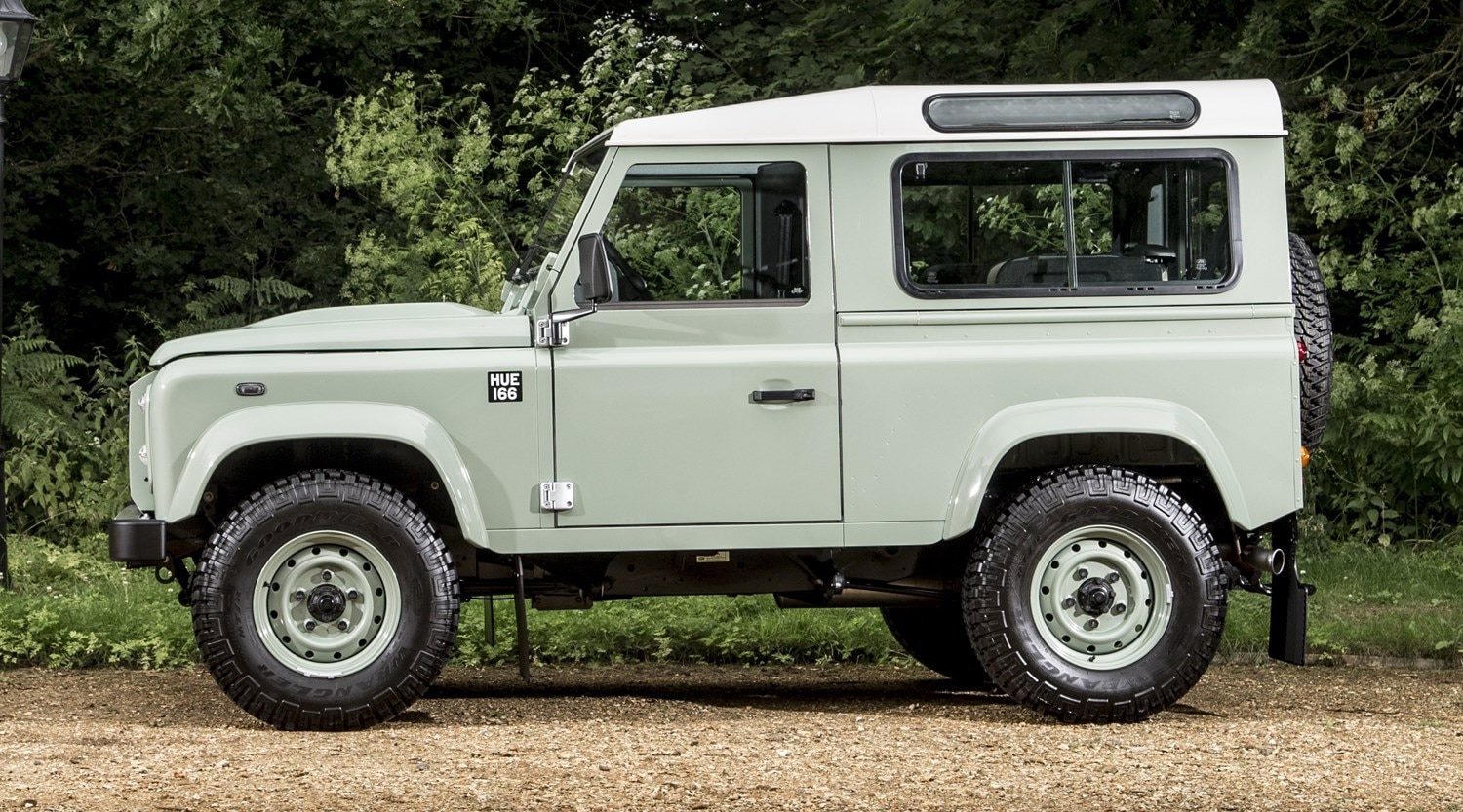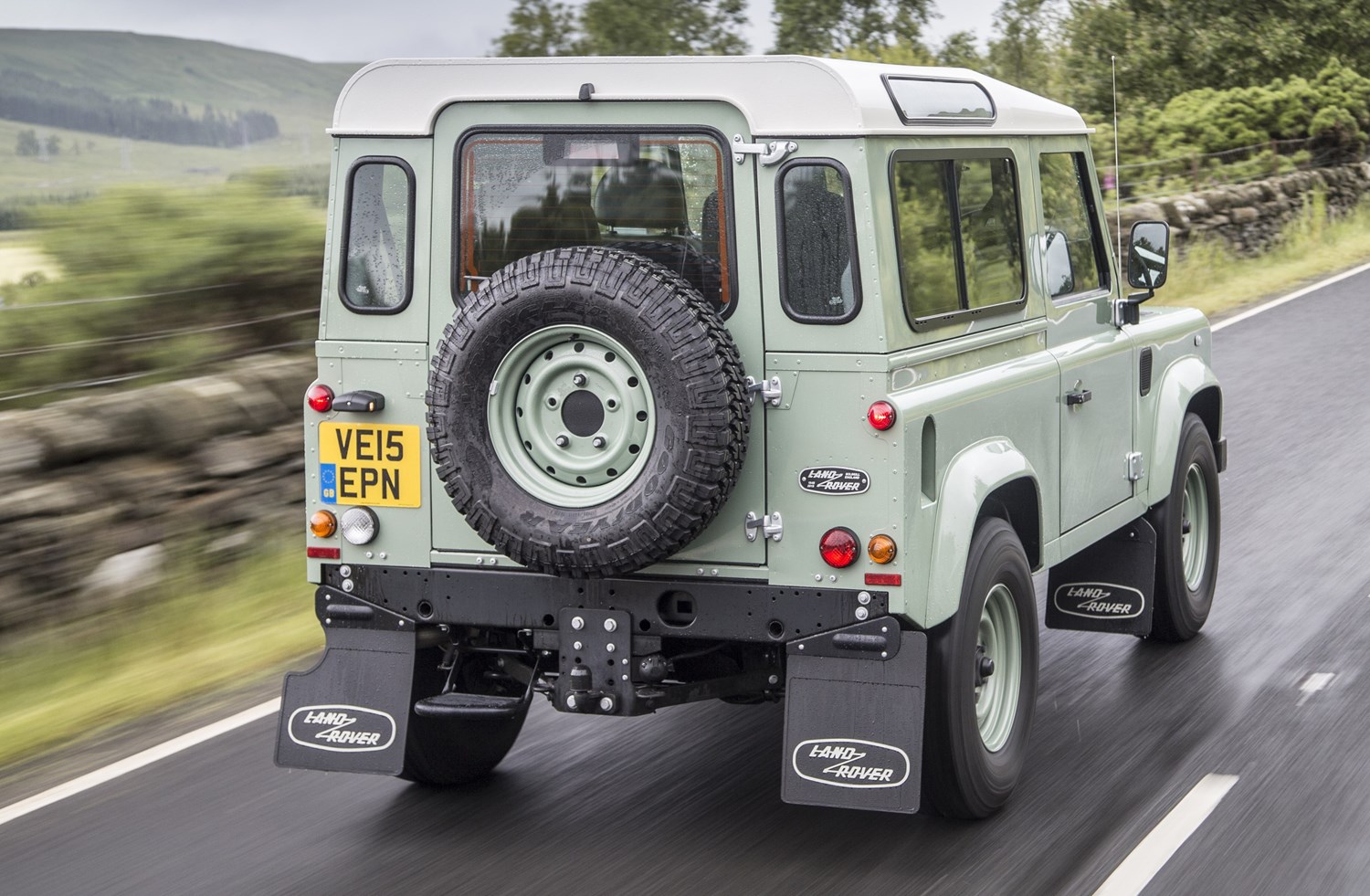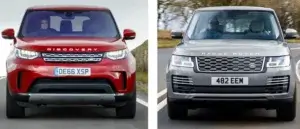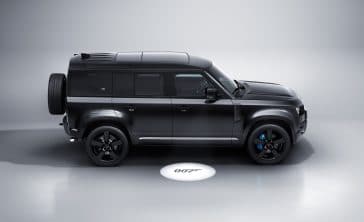Value for money
Surprisingly considering the model’s popularity and reputation, you would expect good levels of equipment and comfort. But the Defender was more commonly known for having limited accessories and being the simplest essence of off-roading.
So most of the models you will find on the used market will have been modified to suit the taste of the previous owner, including more comfortable seats and adventure packs to make it more practical and adaptable.
One example of one of the last models was a 2016 ’65 plate Defender 90 with the Adventure package added. With it comes electric front windows, under-body protection, permanent four-wheel drive, LED headlamps, power-assisted steering, DAB radio with CD player and AUX/Bluetooth connectivity, an access ladder and a roof rack, which offers more practical facets when off-roading. It comes with only 5,690 miles on the clock but due to its recent build and large amount of add-ons it costs £45,000.
Other used models that don’t have additions and have been used thoroughly are also available, but many of those have high mileage and can be difficult to maintain. But it is seen that the main reason you buy a Defender is not for accessories and whether they are comfortable or not – it’s the image that the iconic vehicle holds and if it can be a good project to revamp and renovate, especially with older versions.
Looks and image
Although you can tell the difference between each generation of the Defender, the shape did not change too much over the model’s tenure and that is a good thing because there are few models that are as iconic as the Defender.
Even when it was updated in 2012 it kept its vintage look that has helped to make it so recognisable and even with it coming in a large range of body styles, the standard Defender look is kept throughout. The long bonnet, squared-off body and raised ride height is the quintessential off-roader and it has been the base template for many other 4x4s since.
In terms of driving the Defender has a split personality and that can turn people away very easily. Off-road, the Defender is almost perfect thanks to its impressive ground clearance, sturdy chassis and four-wheel drive with low range gearing and is still a benchmark for other SUVs to strive for.
Unfortunately, the same can’t be said for when it’s on the road. It is unwieldy, difficult to control and incredibly harsh in terms of suspension. The steering is overly weighty and doesn’t respond well to commands, with excessive body roll and an unsettled ride on pretty much all surfaces rounding out a poor on-road performance for the Defender.
With such a harsh ride setup and very spartan interior scope from base spec models, don’t expect to be in the lap of luxury when you’re driving or being taken somewhere in one. The driving position is cramped, adjustability is limited and, due to the harsh suspension, ride comfort is not great. But there is a high level of adaptability with what you can do behind the front seats. In the longer wheelbase models you can get as many as 11 people in the back – which can be very handy indeed – but not necessarily in supreme comfort.
Space and practicality
Depending on which wheelbase you choose the Defender can be very practical indeed. In the short wheelbase ’90’ versions the space is not as great as you would think as the back seats do take up a lot of space, but in longer wheelbase models and even pick-up version, you will find a good amount of storage space.
There isn’t one set figure for the Defender due to the adaptability and multiple variations on offer, but if you’re looking for practicality go for one with a longer body.
Here is an area that will worry prospective Defender buyers – safety. The Defender has never been officially examined by Euro NCAP, and with no airbags, seatbelt pretensioners or any safety systems of note, the Defender does struggle to be an overly secure car. The most recent models did come with traction control and ESC, but that doesn’t retract from the fact it suffers heavily in this department.
Families, therefore, may feel that the Defender is not the car for them, especially when models don’t come with Isofix fastening points as standard and the overall comfort of the model may also push them away.




